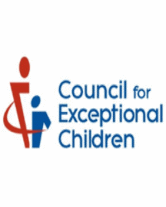Peer Tutoring for Students with Autism
Excerpted from Social Skills for Students with Autism.This approach has socially competent peers learn to use effective teaching techniques and positive reinforcement to teach academic subjects to classmates with autism.
Peer tutoring programs represent a viable means of improving the curricular and social interaction skills of students with autism. Research reveals that the teaching of specific tutoring strategies facilitates interaction between children with autism and their socially competent peers. Studies indicate that effects of social initiation intervention are immediately evident and substantial.
In peer tutoring sessions, students work in pairs, with socially competent peers typically serving as tutors and students with autism taking the role of tutee. Tutoring sessions are structured, with both tutor and tutee having assigned roles.
The first step in establishing a peer tutoring program is scheduling informal interaction periods between students with autism and their socially competent peers. It is important that students have some interaction experiences and familiarity with each other. Additionally, peers must be aware of the basic characteristics of the students with autism.
Group and individual instruction of tutors can then begin. Group instruction involves teachers' explanations of procedures for working with students on various learning tasks. In particular, teachers describe:- what tasks and materials to use in tutoring
- how to give directions
- how to give reinforcement
- how to manage inappropriate behavior.
Accordingly, tutors are taught to give 10 short, clearly stated directions (e.g., "Point to the shoe," "Read this word") and to model correct responses (e.g., labeling objects, using noun-verb phrases). The importance of reinforcement as a major component of successful tutoring is emphasized. Tutors are taught to reinforce appropriate behavior by using frequent positive statements (e.g., "Good counting," That's right, it's a ball").
To manage behaviors during sessions, tutors also are taught to use verbal prompts (e.g., stating, "Look at your book" when the tutee is not attending), physical guidance (e.g., touching the tutee's arm to encourage beginning a task), and ignoring (e.g., attending to a separate task when the tutee displays inappropriate behavior).
The management strategy is selected by the supervising teacher based on his or her knowledge of its potential effectiveness for the individual child. Tutors also are informed that their role involves both privilege and responsibility. Thus, each tutor is provided the following role-related information:
- Tutors have sole responsibility for teaching a given task to another student and/or practicing that task with the students.
- Tutors must attend every scheduled tutoring session on days they are in school.
- Students with autism depend on tutors in two ways: to teach them and to befriend them.
- Students with autism imitate, so tutors need to be good role models and behave in an appropriate manner.
- Tutors and tutees must work first, then play. That is, pairs engage in assigned tasks for 10 to 20 minutes, then play for approximately 10 minutes.
Subsequent to general tutoring sessions, the teacher provides individual instruction to tutors in the following areas:
- the academic subject area for tutoring
- materials and activities for tutoring
- demonstrations in tutoring by the teacher working with students with autism
- a practice session on tutoring with students under teacher supervision
- teacher feedback on the tutor's performance
- data collection. Students must demonstrate tutoring competencies prior to tutoring peers with autism.
- soliciting the student's attention
- providing choices
- modeling appropriate social behavior
- reinforcing attempts at functional play
- encouraging/extending conversation
- turn taking, narrating play
- teaching responsiveness to multiple cues
Similarly, others have taught peers to provide modeling of play behaviors, commenting, attending, time delay, and incidental teaching strategies to increase social behaviors of students with autism as well as the mediation capabilities of the peers.








